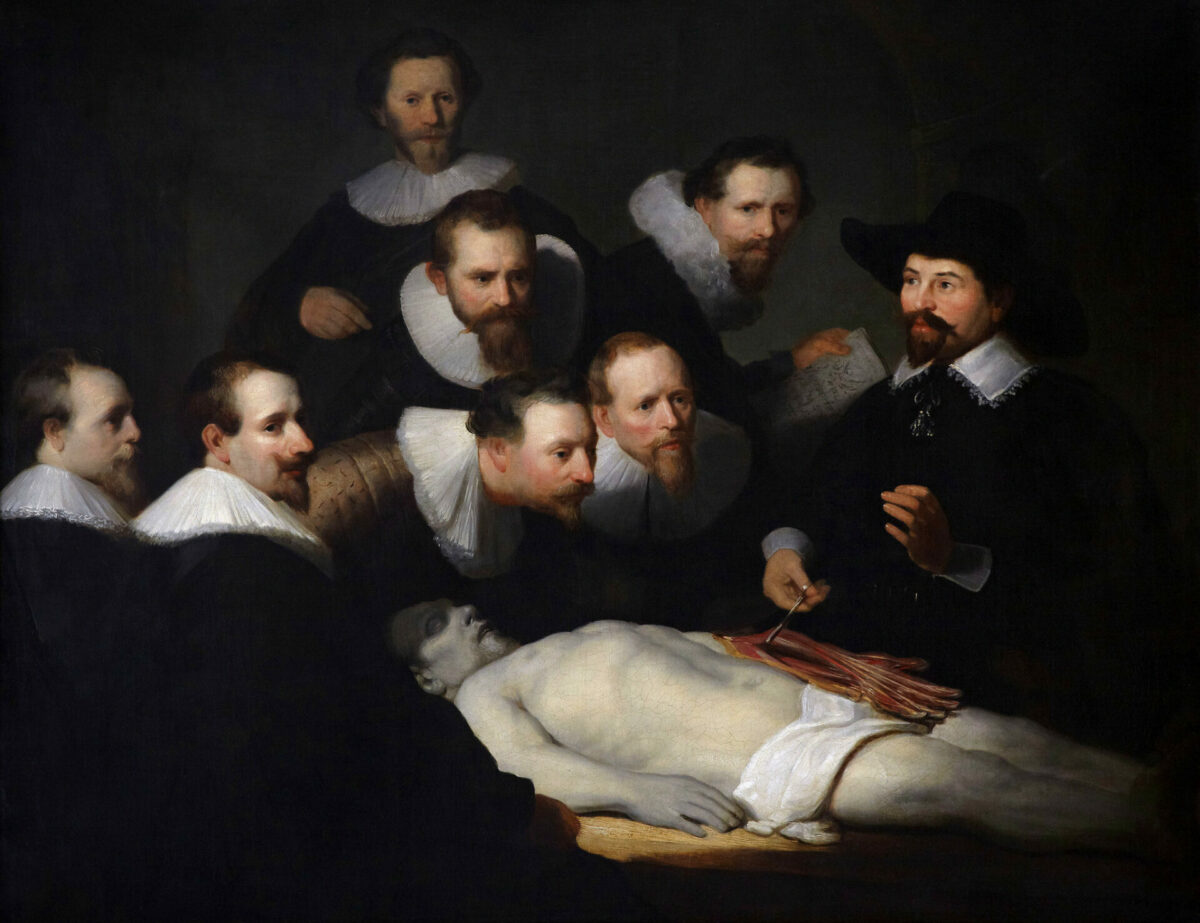To give mind to machines, they are calling it
out of the world, out of the neighborhood, out of the body.
They have bound it in the brain, in the hard shell
of the skull, in order to bind it in a machine.
From the heron flying home at dusk,
from the misty hollows at sunrise,
from the stories told at the row’s end,
they are calling the mind into exile
in the dry circuits of machines.
- from Wendell Berry's The Peace of Wild Things
Princeton, WV. Tobias Wolff, author of works that include This Boy’s Life, In Pharaoh’s Army, and several masterful short story collections, recounts a moment of revelation when he first held his newborn son in his arms. The revelation itself is worth discussing, but this essay’s concern lies in the fact that Wolff’s insight came about by way of his body. And it’s by way of the body that we can discern the shortcomings of bodiless artificial intelligence.
Much has been written on ChatGPT and the questions it raises about the nature of human thought and language. This is a complex topic, and I don’t pretend to plum it fully, but as Matt Stewart noted in response to Matthew Smith’s “Centering Humanity in the Age of the Chatbot,” Wendell Berry has long called attention to the “hatred of the body” that’s inherent in much modern technology.
Because AI, and specifically ChatGPT, lack a body, our involvement with these technologies moves us away from our own bodies. The further we remove ourselves from our bodies, the further we remove ourselves from the labor of freedom and into the laziness of captivity, for such labor builds up our bodies, and, as Joshua Gibbs posits in his book How To Be Unlucky, our souls absorb the consequences of what we do with our bodies.
In terms of intelligence, we may grow frustrated with the slowness of our ability to learn and reason. Razumihin, from Dostoevsky’s Crime and Punishment, celebrates such slowness when he says, “That’s man’s privilege over all creation. Through error you come to the truth! I am a man because I err! You never reach any truth without making fourteen mistakes and very likely a hundred and fourteen.” But Razumihin’s philosophy is a hard sell when artificial, disembodied intelligence offers its seductive promise of ease and efficiency.
Consider the contrasting claims of Ilya Sutskever, “co-founder and chief scientist of OpenAI and one of the primary minds behind the large language model GPT-3 and its public progeny, ChatGPT.” In an interview on the podcast Eye on AI, Sutskever said that “the human brain is just a neural network with slow neurons.” In other words, the human brain consists of only matter. What is called the mind, then, occurs as a result of material functions. Material functions can be replicated, to move with greater speed, thus producing more and more of whatever we think we need or want. Efficiency, then, glimmers as the prized jewel on the gates of technological advancement, and technological advancement has zero patience for human error.
Efficiency comes from the Latin efficere, meaning “work out, accomplish; making, producing immediate effect.” The desire for immediate effects causes turmoil for humans. Who doesn’t need a productive crop yield? Who wouldn’t rejoice over faster weight loss or muscle gain? How much faster, and without impingements, do we want our downloads and streaming services to function? Efficiency indicates an absence of conflict. It means frictionless production. And while one would not want perpetual conflict, it is conflict that often challenges our embodied souls to develop virtue. A gross submission to artificial intelligence threatens to eradicate the very conflict that forges virtue in our souls, for one cannot hate the body and become good.
Humans who have disciplined mind and body over many years can achieve incredible feats. We see this in the fine art when a musician or athlete performs. We can see it also on the battleground, in the debate hall, in the office, on the field of manual labor, and in the making of a home. But even highly trained human bodies have limits. Leo Tolstoy’s short story “How Much Land Does a Man Need?”, Shakespear’s Tragedy of Macbeth, and Sophocles’ Antigone all provide a sober reminder of this reality, and a warning about the temptations to overstep these limits. To this point, Wendell Berry advocates on behalf of the limitations of the human body in his essay “Feminism, the Body, and the Machine”:
The hatred of the body and of the body’s life in the natural world, always inherent in the technological revolution (and sometimes explicitly and vengefully so) is of concern to an artist because art, like sexual love, is of the body. Like sexual love, art is of the mind and spirit also, but is made with the body and it appeals to the senses. To reduce or shortcut the intimacy of the body’s involvement in the making of a work of art (that is, of any artifice, anything made by art) inevitably risks reducing the work of art and art itself.
The reduction of the work of art and art itself reduces one’s love for the body, which reduces the love for being.
As for Berry’s comment that art appeals to the senses, Lee Siegal’s essay “On the Need To Touch Grass” similarly defends the need for the bodily involvement in intelligence and intelligibility. He bluntly claims, “there is no art, humble or high, without sensory memory.” Siegal launches from this claim to make the following prophecy:
In a world of screen and ChaptGPT and metaverses, people will gradually allow their tactile knowledge…to slip away. The poem will no longer make sense. The magnificent linguistic sub-structure of simile will cease to exist. And without simile, language will lose the double joy of using physical sensations to evoke meaning beyond the world of material appearance.
Human bodies that depend on screens for thought and language will atrophy both cognitively and physically.
Sutskever’s materialistic philosophy, with its devotion to technological progress, threatens to sever human bodies from the ability to “evoke meaning beyond the world of material appearance.” Such a view is not new, no matter how much it seems to rely on new technologies.
This technologically fueled hatred for the body is the latest version of an ancient and opposite philosophy—Gnosticism—that disdains the material world and teaches the human to seek escape from it and from the body.
In her book Love Thy Body, Nancy R. Pearcey addresses this gnostic withdrawal from the embodied sense-making experience. Distancing ourselves from our bodies reduces our capacity to love our bodies, our neighbors, and, ultimately, our Creator. While humans ought not worship their bodies, we are also called to not dismiss our bodies, or the material world, as if the spiritual realm were all that warrants our attention. Biblical theology proclaims the truth of this paradox and offers its highest example in the incarnate man Jesus Christ. The physical body of Jesus Christ ought to be the focus of the church’s life. Brandon Spun, Dean of Academics and Senior Fellow at New College Franklin, published a paper[3] that exhorts sabbath observers to remember that the eucharist or the communion table offers believers the time to recall how Christ gave his body for humanity. The Word incarnate, prophesied of in the Old Testament, entered the world by way of the womb, was born, grew in stature, dwelt among us, and surrendered his body to be broken so that we might be reconciled to the One who created us.
When a father like Wolff holds his newborn son in his arms and is overcome with emotion and a new understanding of life’s significance, he experiences a kind of intelligence akin to what should overcome us on the sabbath when we take the bread and the cup of Christ: an intelligence that cannot be replicated in the dry circuits of a machine. Will we distance ourselves from machines that, like carnival attractions, buzz and ping and light up with those grand prizes of ease and efficiency so that we might remember Christ’s body by way of our bodies? Or will we offload our humanity to those devices that hate our embodied souls?
Image via Flickr: Rembrandt, “The Anatomy Lesson of Dr. Nicolaes Tulp” (1632)





4 comments
Petra Z
“ Human bodies that depend on screens for thought and language will atrophy both cognitively and physically.”
I agree with the author and this is the exact reason why AI threats human existence… it doesn’t kill from the outside but from within.
I also think that AI is the manifestation of modern-day human arrogance : it equates efficiency with quality of life; it brags knowledge above wisdom. AI is essentially a pack of soulless knowledge storage that has a human-like output. AI can never offer wisdom, it has absolutely no emotions, it doesn’t have a soul.
Colin Gillette
Mark, I really appreciated this piece. There are a lot of young people who are interacting with technology in ways that is severely warping their relationships with their bodies, and have been increasingly difficult to reach. The past 3-4 years has not helped with the increase in social isolation, and the challenges on local communities. This was a refreshing piece that speaks to some of those struggles.
Matt Stewart
Thanks for this thoughtful reflection, Mark. I wish the self-proclaimed disruptors who created this technology would have taken at least ten seconds to wonder, “what could go wrong?” before launching it.
My “what could go wrong” list is a lot longer than my “what benefit does this technology offer” list. But I guess ten seconds of “what could go wrong” reflection is too much ask from people who like to move fast and break things.
Mark
Matt, that’s well said: “‘What could go wrong reflection is too much ask from people who like to move fast and break things.'”
Comments are closed.